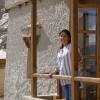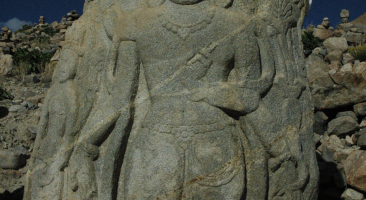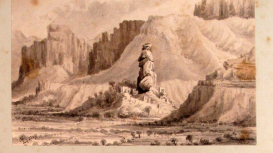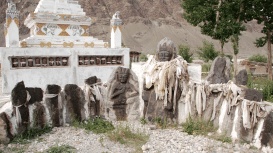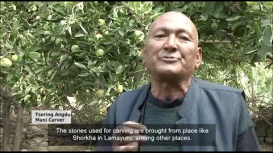Throughout Ladakh, rock carvings are visible along pilgrimage and trade routes, and at wayside shrines. Some of these date to the Palaeolithic and Neolithic periods, others are more recent carvings. Their delineations include simple figures, animals and outlines of structures to more intricate works of more monumental and religious stature.
It was not until the beginning of the 1900s that the petroglyphs of Ladakh were scientifically recorded by the Moravian missionary, August Hermann Francke during his stay in Ladakh. In recent times, archaeologists including many local scholars have studied, recorded and analysed these petroglyphs and rock art from different parts of Ladakh to establish the history of this region, which dates back from prehistoric to present times. Interesting techniques like incising, pecking, carving, or abrading are used to make petroglyphs. Images represented on such sites include animals like the ibex, camel and horse, amongst others; humanoid figures and many symbols, largely Buddhist symbols such as chortens, vajra (thunderbolt) and swastika, amongst others, including Nestorian crosses in a few areas.
The range of these artworks vary from region to region, and archaeologists claim that these petroglyphs and rock art help in understanding the history of Ladakh and its linkages with neighbouring regions such as Central Asia and Tibet since very limited written records of the history of Ladakh from the tenth century are available. Rock art continued to have an important place in Ladakh, with early sculptures dating from the eighth century onwards. Furthermore, stones were important to daily life in the region with utility items made of stone, such as the stone mill for grinding grain, stone pots for cooking and storage, oil lamps, among others.
In modern times, as the pace of development work escalates, especially along the routes and paths where these petroglyphs and rock art are located, many sites have been damaged and destroyed. This is a huge matter of concern. Archaeologists and local stakeholders are taking up the task to conserve this heritage through interventions at the individual as well as government levels.
This module focuses on the petroglyphs and rock art practices of Ladakh, the location and range of different types of petroglyphs and rock carvings, and symbolic significance. It also looks at other forms of prehistoric rock art, their links to trade and influence from outside the region. Finally, focusing on their current status and the preservation and recognition of petroglyphs and rock art as an important cultural heritage of Ladakh.
